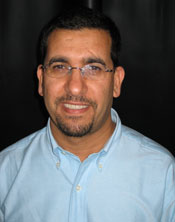Program Information
A High Dose Rate Total Skin Electron Irradiation Technique with A Specific Inter-Film Variation Correction Method for Very Large Electron Beam Fields
X Yang , J Rosenfield , X Dong , E Elder , A Dhabaan*, Emory University, Atlanta, GA
Presentations
SU-F-T-70 (Sunday, July 31, 2016) 3:00 PM - 6:00 PM Room: Exhibit Hall
Purpose: Rotational total skin electron irradiation (RTSEI) is used in the treatment of cutaneous T-cell lymphoma. Due to inter-film uniformity variations the dosimetry measurement of a large electron beam of a very low energy is challenging. This work provides a method to improve the accuracy of flatness and symmetry for a very large treatment field of low electron energy used in dual beam RTSEI.
Methods: RTSEI is delivered by dual angles field a gantry of ±20 degrees of 270 to cover the upper and the lower halves of the patient body with acceptable beam uniformity. The field size is in the order of 230cm in vertical height and 120 cm in horizontal width and beam energy is a degraded 6 MeV (6 mm of PMMA spoiler). We utilized parallel plate chambers, Gafchromic films and OSLDs as a measuring devices for absolute dose, B-Factor, stationary and rotational percent depth dose and beam uniformity. To reduce inter-film dosimetric variation we introduced a new specific correction method to analyze beam uniformity. This correction method uses some image processing techniques combining film value before and after radiation dose to compensate the inter-variation dose response differences among films.
Results: Stationary and rotational depth of dose demonstrated that the Rp is 2 cm for rotational and the maximum dose is shifted toward the surface (3mm). The dosimetry for the phantom showed that dose uniformity reduced to 3.01% for the vertical flatness and 2.35% for horizontal flatness after correction thus achieving better flatness and uniformity. The absolute dose readings of calibrated films after our correction matched with the readings from OSLD.
Conclusion: The proposed correction method for Gafchromic films will be a useful tool to correct inter-film dosimetric variation for the future clinical film dosimetry verification in very large fields, allowing the optimizations of other parameters.
Contact Email:

